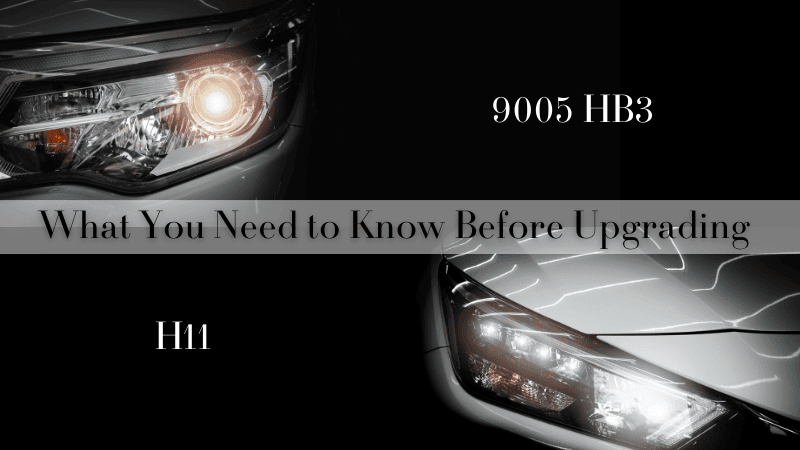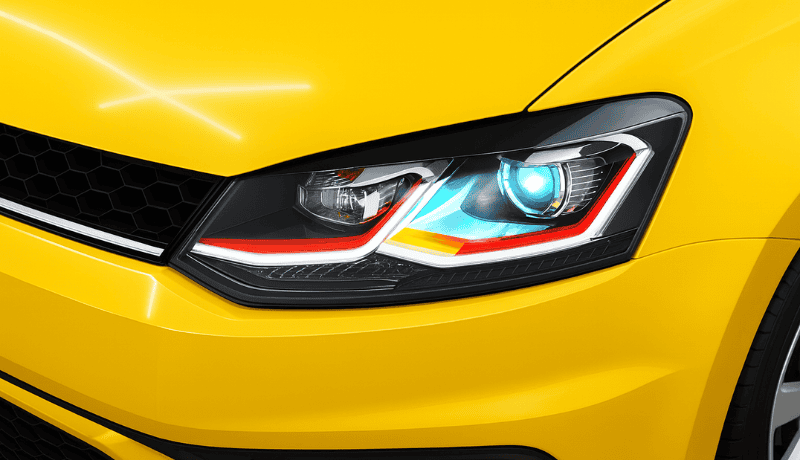Have you ever wondered why your high beams and low beams are different when you switch between them? Is it simply because the high beam sits higher? Or does it have something to do with the angle? Or maybe it’s because the entire mechanism is different?
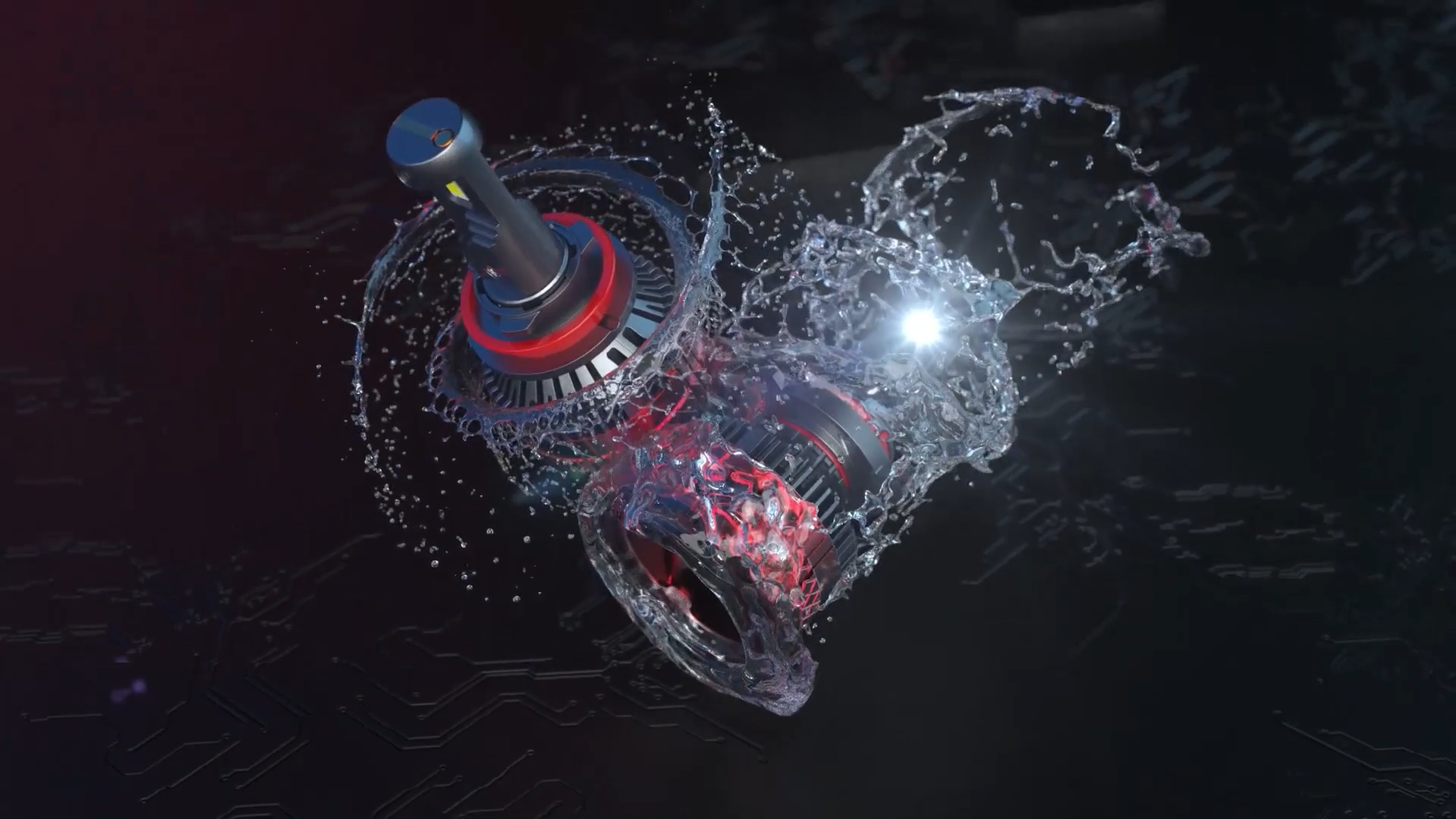
High beams and Low beams are fundamentally different, from the bulb type to the housing to the power consumption. Even the bulb connectors aren’t the same. Upgrading or changing them will eventually lead you to these two terms: H11 and 9005 automotive headlight bulbs. H11 and 9005 (HB3) are two commonly used headlight options, each serving different purposes.
H11 bulbs are typically used for low beams and fog lights, a balanced light output ideal for everyday driving. In contrast, 9005 (HB3) bulbs are designed for high beams, brighter and more focused. Perfect for nighttime and high-speed driving.
Since your knowledge of these two bulbs will indeed affect your nighttime driving experience, let’s get to know them better!
Headlight Bulb Basics
H11 Bulb Characteristics
The H11 is a popular choice for low-beam and fog light applications. It offers balanced light output and energy efficiency for ideal nighttime driving.
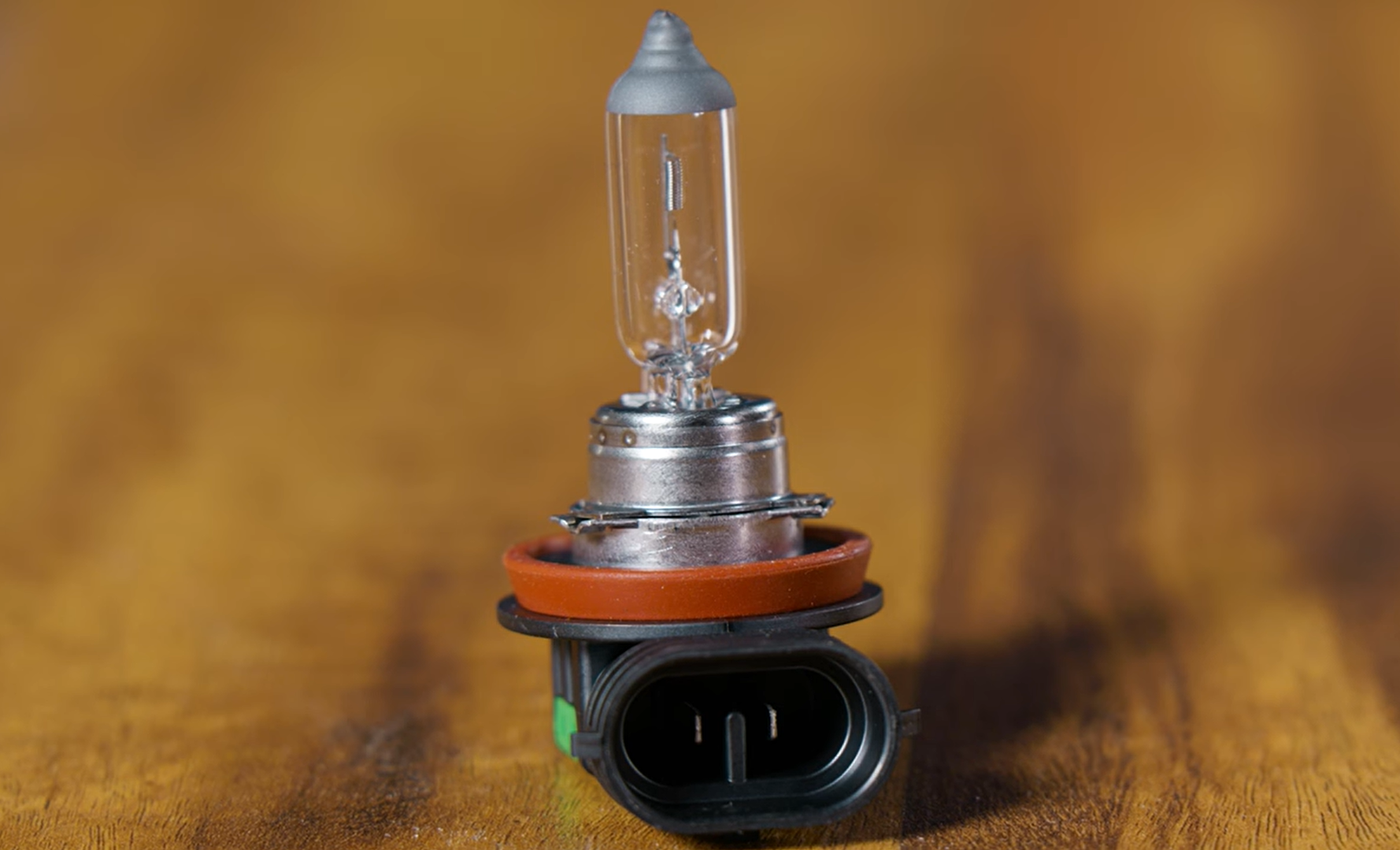
Single Filament Halogen Bulb: The H11 is a single filament bulb explicitly designed for low beam applications. It provides consistent, reliable light output and delivers a steady source of illumination.
Defined Cutoff: The H11 bulb features a defined cutoff that directs light forward and downward, reducing glare for oncoming traffic. This is especially useful in urban areas with inadequate street lighting for safer nighttime driving.
Halogen Limiter for Glare Reduction: Some H11 bulbs come with a grey layer on top to minimize glare. This layer pulls light back into the reflectors, ensuring that the light is focused where it’s needed and not scattered. This feature also helps others drive comfortably.

Light Output and Color Temperature: H11 bulbs produce around 1,350 lumens with a colour temperature of 3,200K to 3,500 K. They emit a warm, yellowish light that reduces eye strain and performs well in foggy or rainy conditions.
Energy Consumption: Running at 55 watts, the H11 bulb balances energy efficiency with adequate illumination, ensuring reliable performance without overloading your vehicle’s electrical system.
Durability and Lifespan: H11 bulbs are durable, with a lifespan of 500 to 1,000 hours. They are a cost-effective option but require frequent replacements.
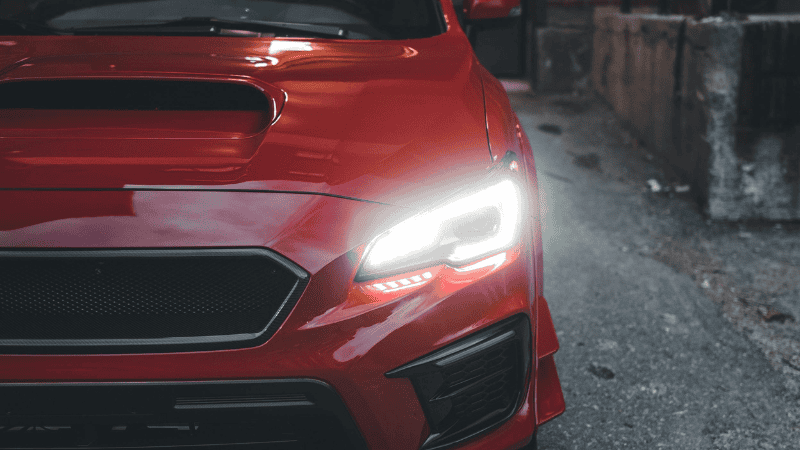
Compatibility: H11 bulbs are commonly used in various vehicles for low-beam headlights and fog lights. It’s essential to check your vehicle’s manual to ensure proper fit and installation.
In well-lit urban areas, the H11 bulb’s defined cutoff and warm light output provide clear visibility without excessive glare. Since traffic volume is much higher in these areas, glare reduction is immensely important for safe driving.
9005 (HB3) Bulb Features
The 9005, also known as HB3, is a high-performing bulb designed primarily for high-beam headlights. It delivers bright and concentrated light for enhanced visibility during nighttime driving.
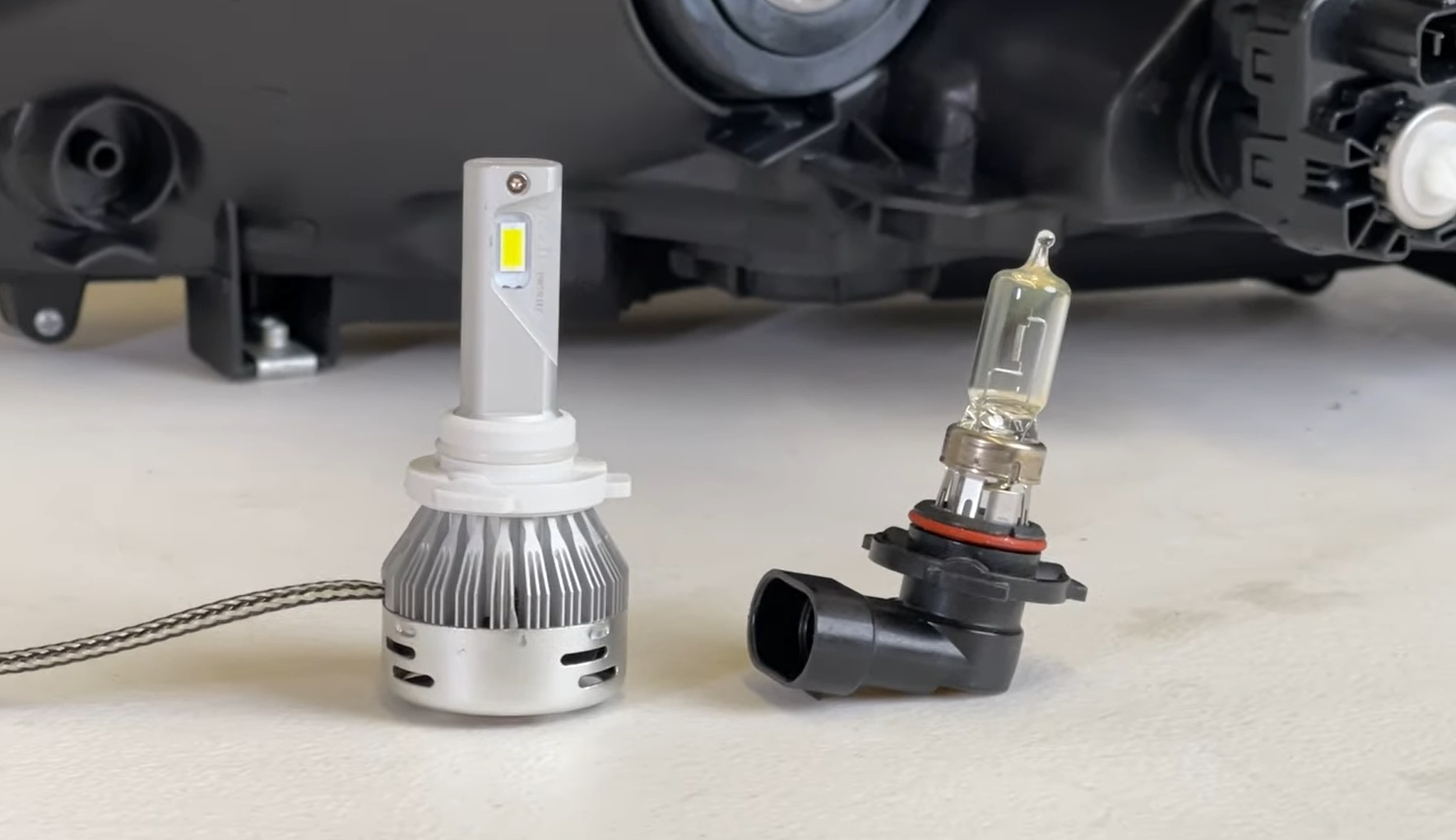
Single Filament Bulb: The 9005 bulb also has a single filament design and is optimized for high beam applications. They can come in Halogen or LED variants. The design for 9005 bulbs ensures a focused and intense light output for situations where maximum illumination is needed (rural areas, long drives, mountain or forest areas, etc).
High Beam Application: 9005 bulbs are specifically designed for high beams, producing a bright and concentrated light that illuminates long distances. This makes them particularly effective for nighttime driving on highways or rural roads, where visibility over a greater distance is crucial.

Light Pattern: The 9005 bulb creates a long and narrow light pattern, extending the reach of illumination down the road. Such a long illumination helps drivers spot obstacles, road signs, and other vehicles from afar, enhancing safety during high-speed or low-light conditions.
Brightness and Power Consumption: These bulbs typically produce between 1,700 and 2,000 lumens, depending on the manufacturer, and operate at 65 watts. This combination provides a powerful and bright beam that is essential for high beam functionality.
Colour Temperature: The 9005 bulb typically has a colour temperature ranging from 5,000K to 6,000K, resulting in a bright white light. It improves visibility and reduces eye strain for comfortable nighttime driving.
Durability and Lifespan: Built for durability, 9005 bulbs can last for several years, depending on usage and driving conditions. They are designed to withstand the high temperatures associated with their powerful light output.
Compatibility: While primarily used for high beams, 9005 bulbs can also be found in some low-beam and fog light applications. However, H8 and H11 are more likely to be in fog lights. Remember, these lights have distinct housings and wiring connectors. So, you can’t simply swap an H11 with a 9005 bulb. It is essential to check your vehicle’s specifications to ensure compatibility before purchase.
Are H11 and 9005 the Same Bulb?
H11 and 9005 (HB3) cannot be used interchangeably. They are NOT the same and cannot be used as substitutes. They differ in housing design, connector type, and intended applications.
Key Differences
Connector (Plug) Design: The H11 bulb features pins that are closer together, with plugs having tabs on both ends for secure fitting. In contrast, the 9005 (HB3) bulb has pins spaced further apart and lacks tabs, leading to a different connector design that is not interchangeable with H11 sockets. Each design ensures proper alignment in the socket for each of the bulbs.
Wattage: H11 bulbs operate at a mere 55 watts, making them energy-efficient while providing adequate illumination for low beam applications, everyday driving, and foggy conditions. On the other hand, 9005 (HB3) bulbs operate at a default wattage of 65 watts. They deliver a brighter and more powerful light than the H11. Higher wattage is necessary for better visibility at night and high-speed driving on highways or rural roads.
Light Output: H11 bulbs typically produce around 1,350 lumens, sufficient for low beam headlights and fog lights. Low beams provide a balanced light output that is usually sufficient in various driving conditions. However, the 9005 (HB3) bulbs generate a higher light output, ranging from 1,700 to 2,000 lumens. The extra wattage goes into producing the added lumen output by the high beam applications.
Application: H11 bulbs are frequently used for low-beam headlights and fog lights. Their defined cutoff helps reduce glare for oncoming traffic and illuminates the road at shorter distances. They are also common in some vehicles’ daytime running lights.
9005 (HB3) bulbs are commonly used for high beam headlights, providing a broader and more extensive range of visibility. This makes them ideal for situations where maximum illumination is needed to spot obstacles and road signs from afar.
Colour Temperature: H11 bulbs generally have a colour temperature between 3,200K and 3,500K, which generates a yellowish light. This kind of light is effective in fog and rain to reduce eye strain.
9005 (HB3) bulbs usually have a colour temperature ranging from 5,000K to 6,000 K. They’re brighter and more white compared to H11 bulbs. The bright white light improves contrast and visibility.
Due to such differences in colour and contrast, high beams appear sharper and more glaring than low-beam headlights.
Durability: The H11 bulb is known for its efficient heat dissipation and cooling, which helps prevent overheating and extends its lifespan. Typically, H11 bulbs are built to handle the thermal load of continuous low-beam operation. The 9005 (HB3) bulb, while offering greater brightness, generates more heat due to its higher power output. This increased thermal load can affect its durability and lifespan, making it important to ensure proper ventilation and cooling in the headlight housing.
Halogen Bulbs vs LED and HID Technology
Durability and Lifespan Comparison
Halogen Bulbs: H11 halogen bulbs typically last around 270 hours, while 9005 (HB3) halogen bulbs have a slightly longer lifespan of about 320 hours. H11 bulbs are designed for low beam use with moderate light output and manageable heat, while 9005 bulbs, used for high beams, handle brighter light and more heat but are built to endure these conditions.
LED Bulbs: LED bulbs can last up to a staggering 50,000 hours. They are a more cost-effective and low-maintenance choice than the traditional halogens. They are more resistant to shock and vibration, and their lower heat generation contributes to their extended lifespan.
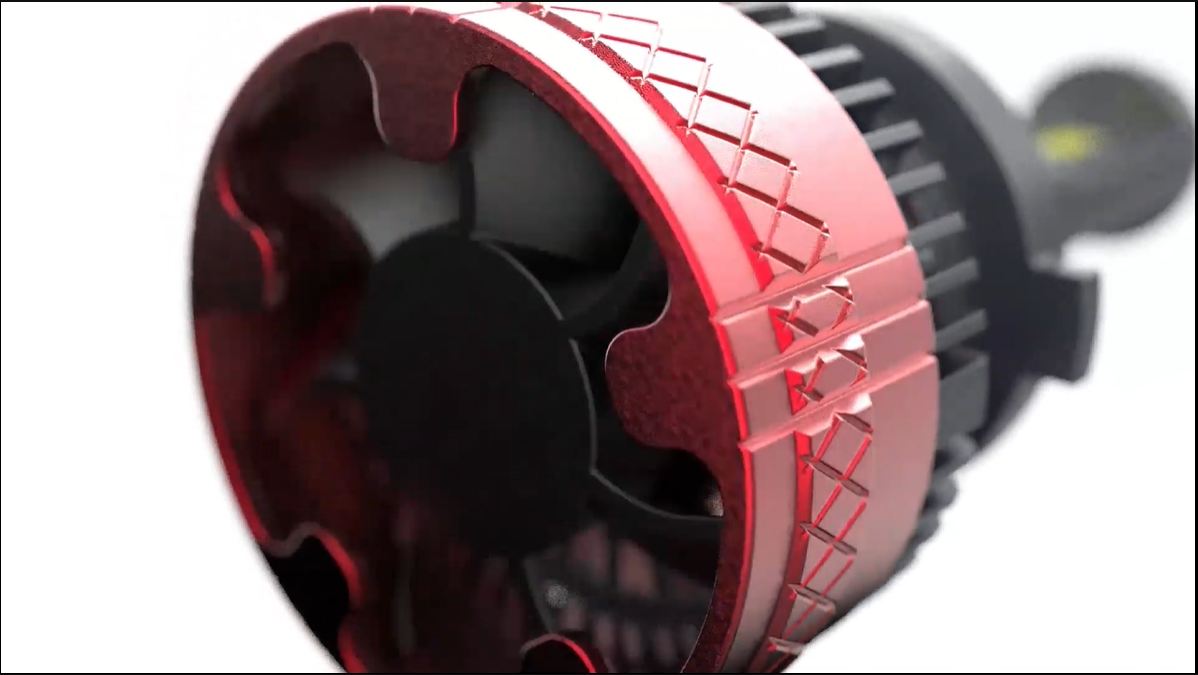
Heat Management: Halogen bulbs like the H11 and 9005 produce significant heat that requires proper ventilation to avoid overheating. LED bulbs, however, feature built-in heat sinks and cooling systems, efficiently managing heat and maintaining performance over time.
Performance and Environmental Impact: Halogen bulbs tend to dim as the filament wears out, reducing their effectiveness before eventual burnout. LEDs, on the other hand, maintain brightness longer and degrade gradually, offering consistent performance.
Additionally, LEDs have a lower environmental impact due to their longer lifespan and energy efficiency, which eventually leads to reduced waste compared to the more frequently replaced halogen bulbs.
Upgrading Your Headlights
Popular LED and HID Upgrade Options for H11 and 9005 Bulbs
Upgrading to LED or HID bulbs can significantly improve your vehicle’s lighting performance. LED options, like those from Carlightvision, offer bright, white light and can last up to 50,000 hours. These LEDs are known for more light and long-range illumination, which can be particularly useful for night driving. Carlightvision LEDs are remarkable for their effective heat dissipation and focused beam pattern.
HID bulbs from popular brands provide powerful, bright light with colour temperatures from 4,300K to 12,000 K. They offer superior brightness and longer lifespans compared to halogen bulbs. If you’re looking to enhance your driving experience, both LED and HID upgrades will give you improved visibility, durability, and energy efficiency.
Fog Lights and Headlight Compatibility
Using H11 as a Substitute for HB3 (9005) Fog Lights
Although H11 and HB3 (9005) are single filament bulbs, they are distinctly built and aren’t directly interchangeable. Their holding areas and power ports are different. Even if you somehow found an unauthorized way to mount an H11 on an HB3 dedicated slot, the results won’t be worth it. They have different wattage ratings that’ll damage the filament soon.
Some of the advanced LED bulbs, however, can substitute an entire series of bulbs (H8, H9, H11, etc.). LED headlight bulbs are widely adopted in many vehicles to produce more output from less power.
So, we recommend you stick to your user manual, use a specific replacement for your original bulb, and avoid improvisations. Review the electrical specifications of dedicated fog light bulbs to pinpoint the exact usable model.
Installation and Compatibility Considerations
Cross-referenced Numbers and Bulb Technology
- The 9005 bulb is also known as HB3. These designations are used interchangeably, so HB3 refers to the same bulb type as 9005.
- The H11 bulb cross-references with several other bulb sizes, including H8, H9, and H16. These bulbs share similar bases and can often be used interchangeably in specific applications, though their wattage and light output may differ slightly.
- Both H11 and 9005 bulbs are standard halogen bulbs, utilizing a tungsten filament and halogen gas to produce light. They are effective but generate a significant amount of heat.
- H11 and 9005 bulbs are available in LED upgrades, which offer higher brightness, longer lifespan, and better energy efficiency compared to halogen bulbs. LED options are popular for enhancing vehicle lighting performance.
- Both H11 and 9005 bulbs can also be upgraded to HID (High-Intensity Discharge) bulbs. HID bulbs provide very bright and intense light for high beam applications and improve overall visibility.
How to Make a 9005 (HB3) Fit in an H11 Headlight?
Fitting a 9005 (HB3) bulb into an H11 headlight is not advisable due to several key issues. With enough DIY skills, you could make them fit. But the simple answer is you shouldn’t. Here’s why;
Firstly, the 9005 and H11 bulbs have different base types and connectors, making them incompatible by design. The 9005 uses a P20d base, while the H11 uses a PGJ19-2 base. The 9005 (HB3) has wider-set pins and a larger connector, while the H11 features pins that are closer together and a smaller connector. Additionally, the 9005 (HB3) lacks the tiny plastic tabs found on the H11 plug casing, which are used to secure the H11 bulb in place.
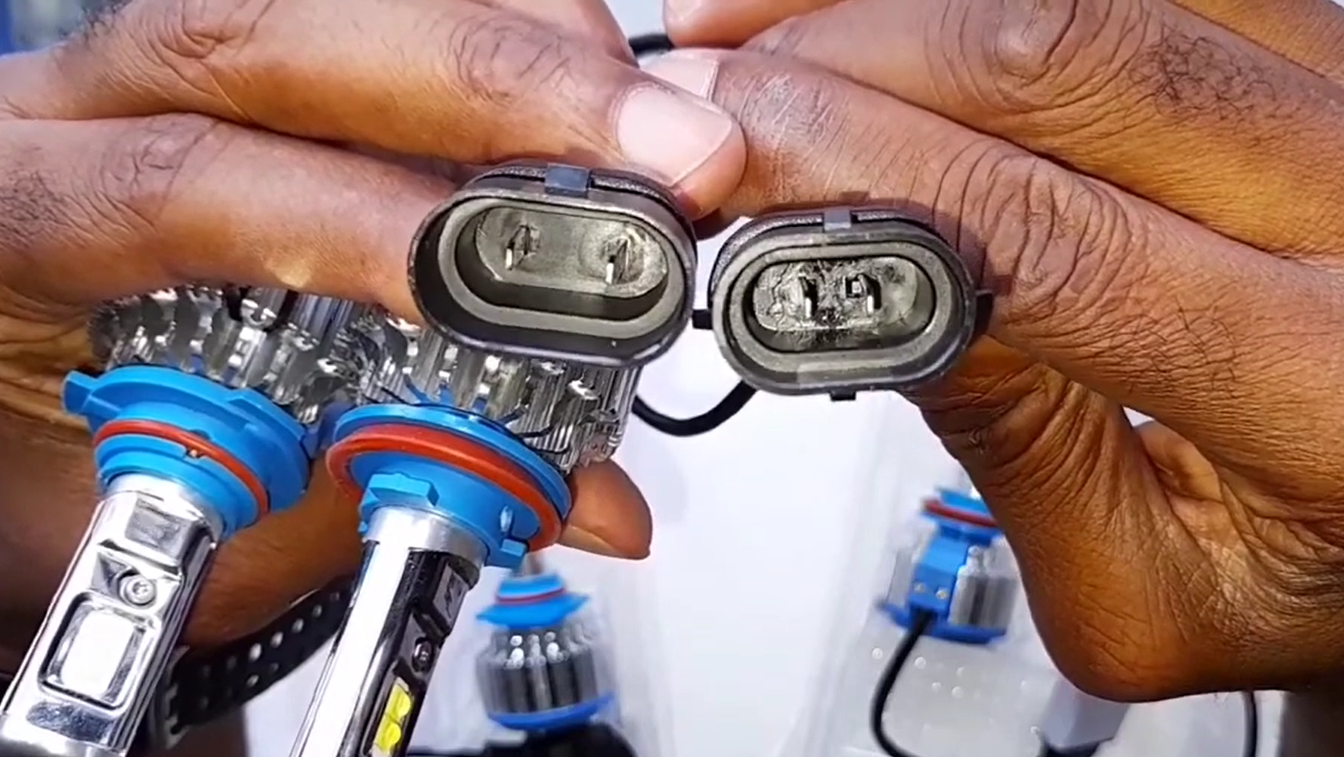
Secondly, the wattage of the 9005 bulb is higher, typically 65 watts, compared to the H11’s 55 watts. Using a higher wattage bulb can lead to overheating and potential damage to your headlight assembly and vehicle wiring. This wattage mismatch can also cause electrical issues, such as blown fuses.
Performance and safety are also concerns. The 9005 bulb does not have a top coating since it’s designed for high beams. It has a beam pattern different from the H11, which is intended for low beams. Installing a high-beam bulb in a low-beam socket can result in improper light distribution, increased glare, and safety risks.
Lastly, such modifications might violate local regulations and void your vehicle’s warranty. This can lead to fines, failed inspections, and the need for costly repairs.
Conclusion
Start by consulting your owner’s manual to identify the correct replacement bulb for your vehicle. Alternatively, use a bulb finder tool to get recommendations based on your vehicle’s details. When upgrading to LED bulbs, choose ones that match the size, shape, and position of your original halogen bulbs. Opt for plug-and-play LED headlight bulbs to simplify the installation process. Also, pay attention to heat management and lumens output to ensure you select the brightest and most efficient LED bulbs for optimal visibility and performance.
Bulk Buy H11 and 9005 LED Headlight Bulbs – Contact Us for Best Wholesale Rates
Remember, understanding headlight bulbs and their distinct designs is a prerequisite for any upgrade or modification. If you’re feeling lost within all this technical jargon, feel free to reach out to experts. Here at Carlightvision, we’re ready to assist you with any queries regarding your car’s headlights. Say hi!
